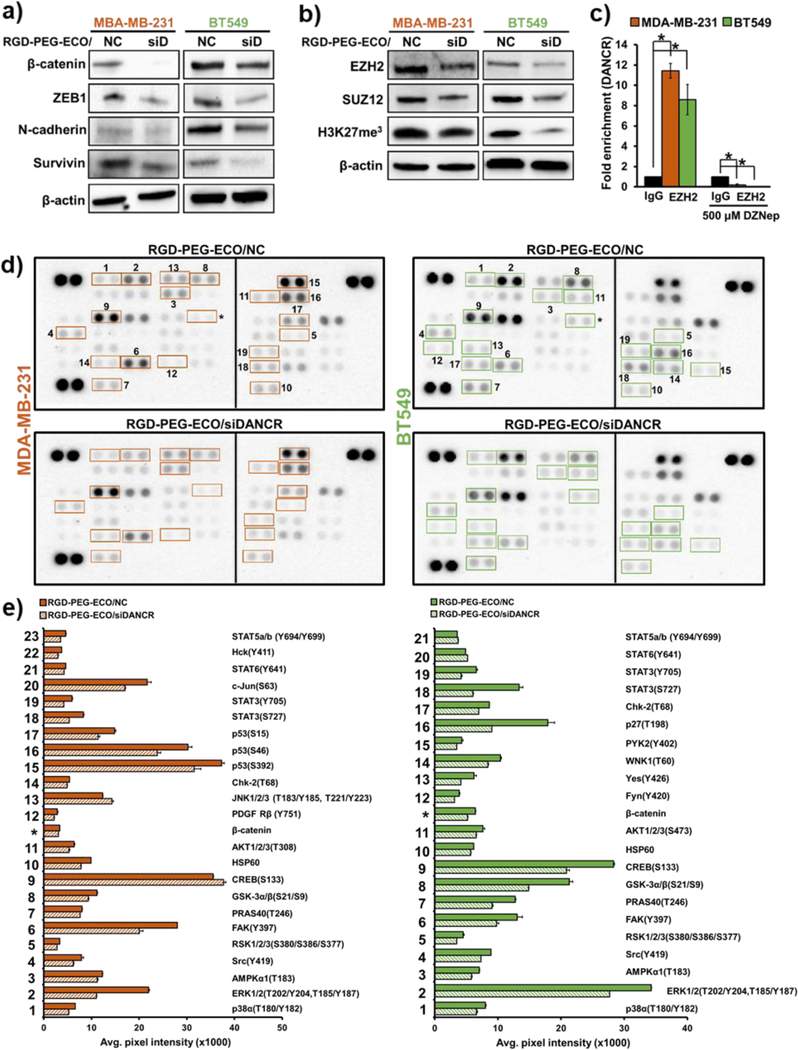Figure 5.
RGD-PEG-ECO/siDANCR nanoparticles suppress the expression of proteins involved in multiple oncogenic pathways. (a) DANCR silencing in MDA-MB-231 and BT549 cells induces significant decrease in the expression of β-catenin (Wnt signaling); ZEB1 and N-cadherin (EMT markers); and the anti-apoptotic protein, survivin. β-Actin is used as the loading control. (b) RGD-PEG-ECO/siDANCR nanoparticle-mediated silencing of DANCR in MDA-MB-231 and BT549 cells downregulates the expression of the PRC2 complex proteins EZH2 and SUZ12, along with decreased H3K27 tri-methylation marks. (c) DANCR regulates PRC2 complex by directly binding to EZH2 in MDA-MD-231 and BT549 cells (*p<0.005). (d) Phospho-kinase arrays demonstrate the differential phosphorylation patterns of 43 kinases with treatment of RGD-PEG-ECO/siDANCR nanoparticles in MDA-MB-231 and BT549 cells. Proteins highlighted in the boxes show significant differences in phosphorylation status between NC and DANCR knockdown. (e) The bar graphs represent the corresponding kinases/proteins that show significant changes (p<0.05) in expression between control and DANCR silencing, calculated by comparing the mean pixel intensities of the duplicate spots.

